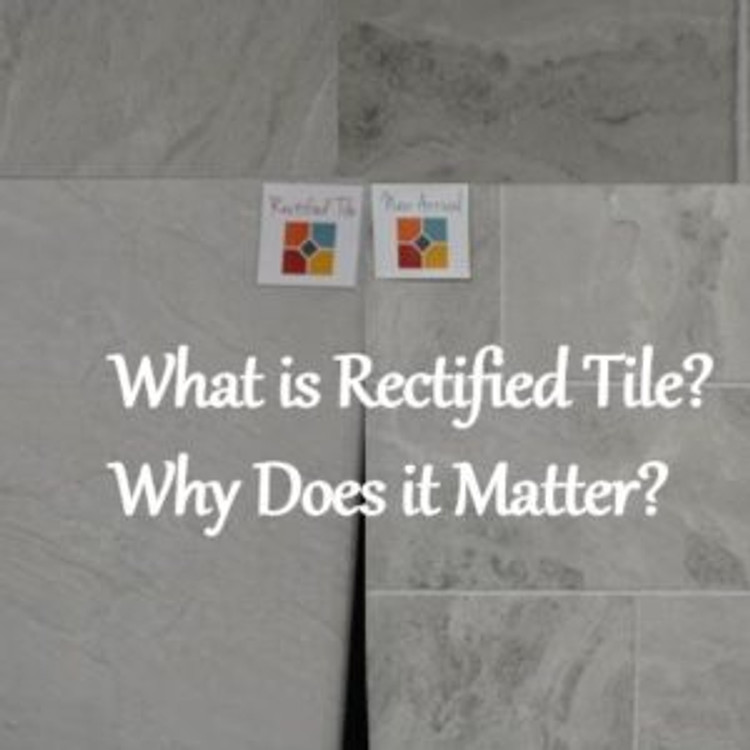What is Rectified Tile and Why Does It Matter for Your Tile Installation?
Posted by Kate Spencer on Sep 7th 2023
Let's imagine that you fall in love with two ceramic or porcelain tiles that look similar. One tile is rectified; the other is not. How do you choose? In this article, we'll explain what rectified tile is and why it matters to you for your tile installation.
What is Rectified Tile?
When you shop Tile Outlets of America, you will find rectified porcelain tile. Although the term 'rectified' can be confusing, it simply refers to a tile where the edges have been ground or sawed after firing so that the overall size of the tile is more precise or exact.
As we explained in Porcelain Tile That Looks Like Marble: Venato and Helios,
Venato and Helios are rectified porcelain tile meaning that they have been cut during the manufacturing process to meet exact size requirements.
Rectification happens after the tiles are fired. That's because for both porcelain and ceramic tiles the firing process can create up to a 1.5% variation in size. This is normal and taken into account during the installation process.
>> See How To Install Tile Correctly and Get Proper Mortar Coverage
>> See Learn How to Use the Tuscan Leveling System When Installing Tile
By sawing, machining or precisely grinding the tiles after firing, the manufacturer tries to minimize (or rectify) the size variations from tile to tile.
The two images below show you an up-close look at a pressed tile (i.e., "normal") where you can see the variations in the edges, and a rectified tile.
This is the pressed tile close-up.
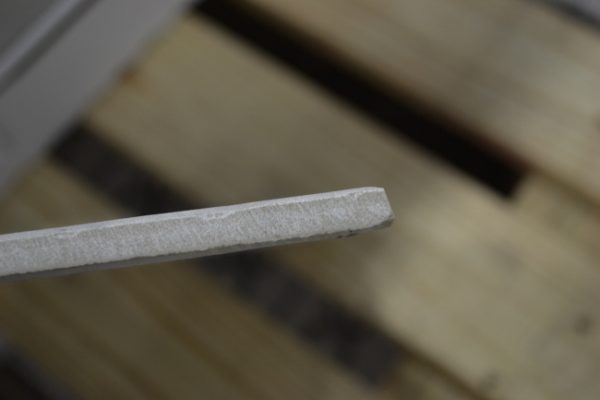
Close-up look at a pressed or untreated tile edge. Notice the variations.
In the image below, notice how clean, precise and exact the edges look. Notice, too, the back of the tile and how you can see where it was mechanically cut and/or ground after the firing of the tile.
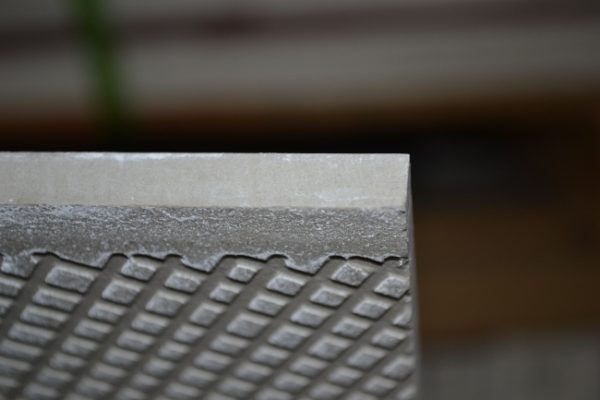
Close-up of a rectified tile edge. Notice how clean, precise and exact the edge looks.
Rectification is Considered an Edge Treatment for Tile
Because the grinding or sawing happens to the edges of the tile, rectification is considered an edge treatment.
It does not affect the thickness of the tile.
Furthermore, it does not make a tile better or worse. Rectification simply affects the kind of edges the tile has which, in turn, means that rectified tile is ideal for specific types of tile installation.
These next two images focus on the back of the tile. The first non-rectified or pressed tile back has a regular border around the edges.
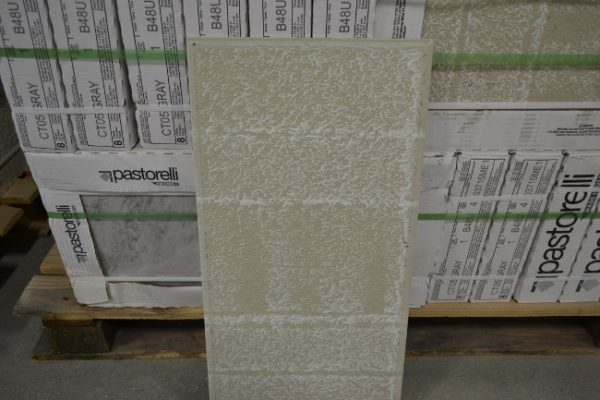
This non-rectified tile has a regular outline around the edges.
Compare that to the rectified tile below where the regular border isn't present on the side where the cutting or grinding took place. This is a tell-tale of rectification.
The tile was created from a much large piece that was cut in two.
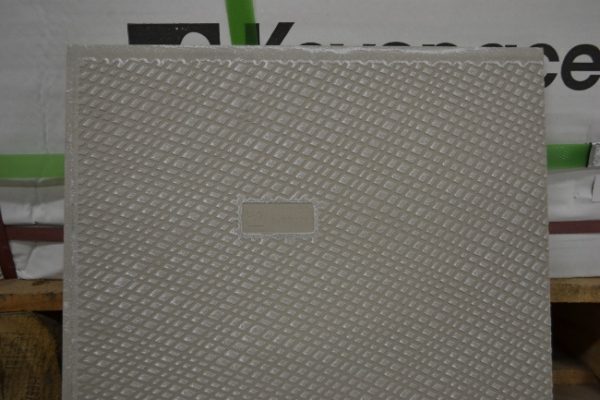
This rectified tile was cut from a much larger piece. Note the side where no regular border appears; that's where the tile was cut.
When Do You Need a Rectified Tile?
There are primarily two reasons for a rectified tile: a larger tile size (i.e., greater than 15" or 16" in any direction) and minimal grout lines. The very thin grout line makes for an almost-seamless look (especially if you choose a grout color that closely matches the color of your tile).
When you place two pieces of rectified tile next to one another, you start to appreciate what that very precise, clean and uniform edge offers you for your tile installation.
This first image below shows you two non-rectified tile pieces next to one another.
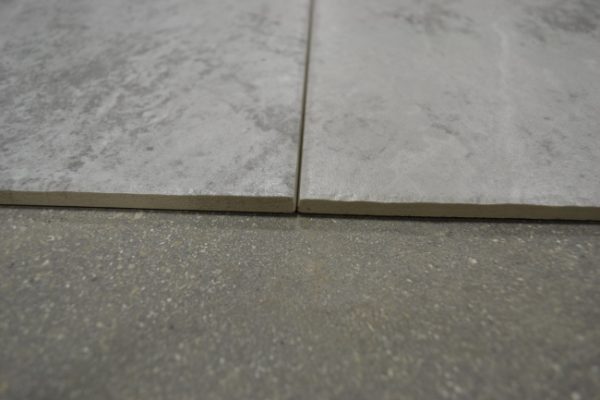
Two non-rectified tile pieces next to one another
Compare that to the image below with two rectified tile pieces. The exactness of the edges means that you can place the tile much closer together - hence the thinner grout lines.
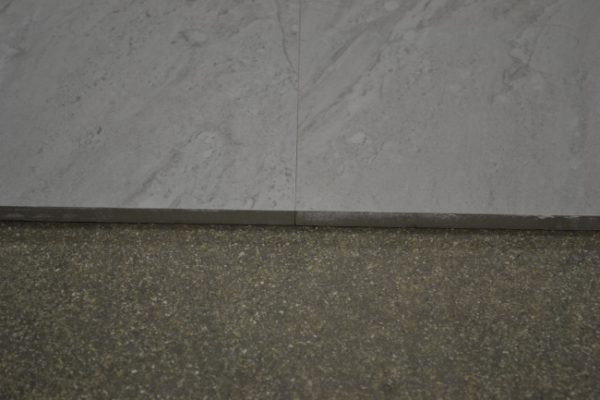
Two rectified tile pieces where the exactness of the edges means you can place the tile much closer together.
The rectified look isn't for everyone. However, if that's the design inspiration you have in mind, you will definitely want to select the rectified tile version of the tile style you love.
Additional Resources on Rectified Tile
These resources provide additional perspective on rectified tile:
- Rectified tiles vs. non-rectified tiles: what's the difference?
- Rectified Tiles: Basics, Production Process, and Reasons To Buy or Not
If you still have questions about tile rectification, please don't hesitate to ask anyone of us at Tile Outlets of America.


